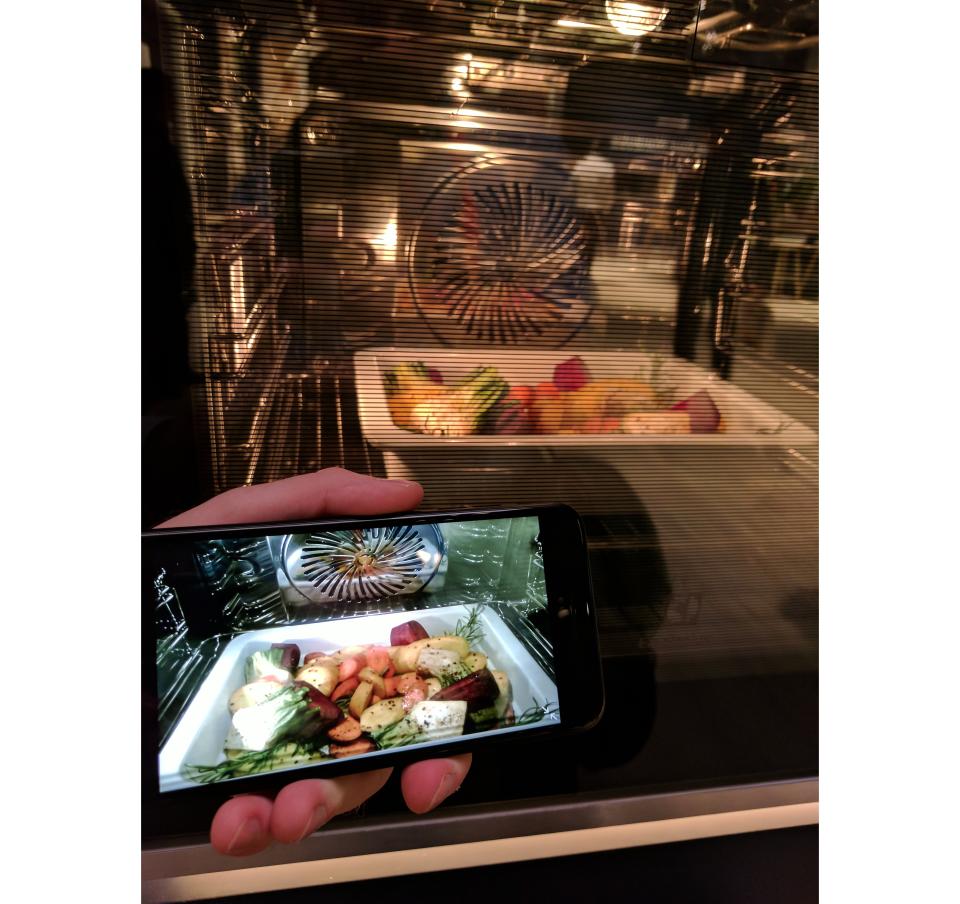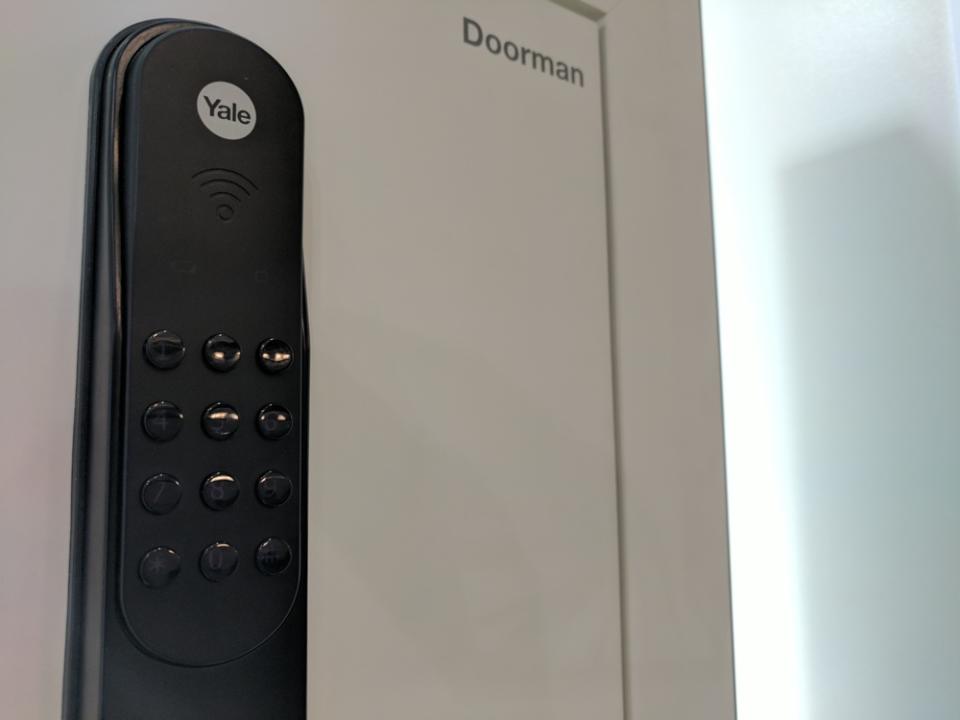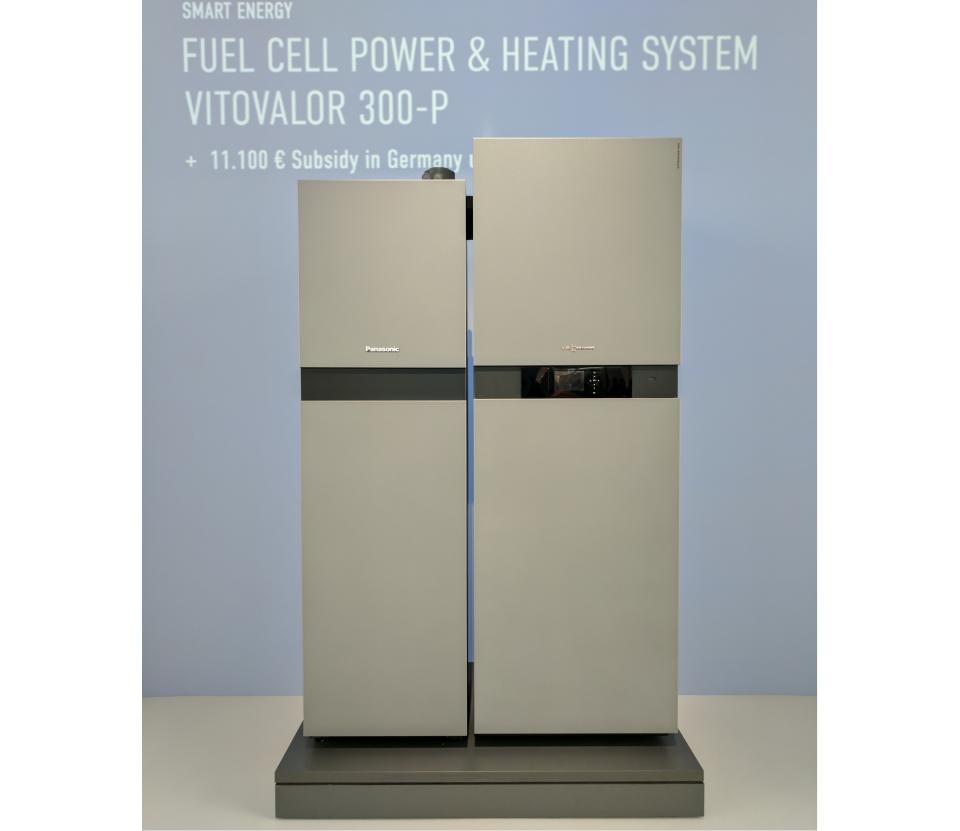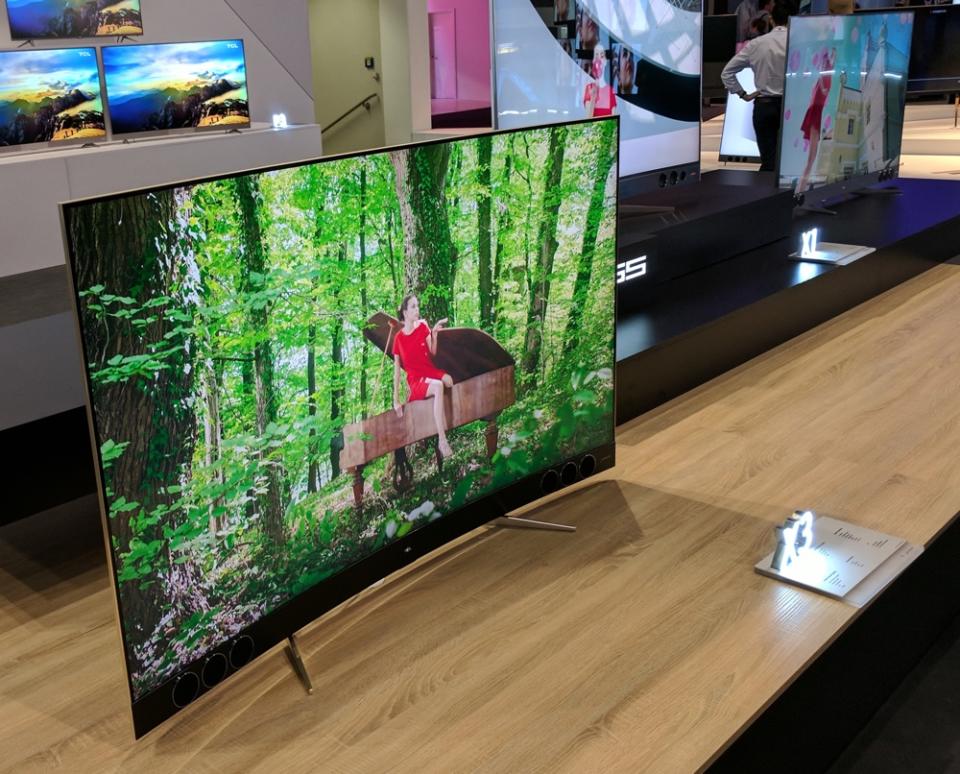4 amazing new gadgets you can't get in the US
BERLIN — Living in the United States and seeing every other electronics-producing country try to sell its gadgets to us, it can be easy to think that the digital universe revolves around us. And most of the time that’s true.
But spending days touring dozens of halls of tech exhibits here at the IFA trade show proved that sometimes manufacturers will decide that our money is no good.
Electrolux’s camera-equipped oven

Fridge cameras have become an old-school technology — even if you opt out of buying some fridge-computer hybrid like Samsung’s Family Hub, you’ll soon be able to buy aftermarket fridge cams — but the Swedish firm AB Electrolux is a bit ahead of the industry in adding a camera to an oven.
In a demo, a rep showed how the camera, mounted on the inside of the handle to see through a pane of glass to that protect its electronics, transmits a view of what’s cooking to a companion smartphone app. That, in turn, frees you to run errands around the rest of the house while occasionally checking on the state of your pot roast, soufflée or whatever.
You can’t, however, use this app to monitor your meal’s progress while away from your house. That’s because European Union regulations requires manufacturers to limit this feature to use on the same home network as the oven.
It’s unclear whether anybody actually needs this. It’s also unclear what other appliances would benefit from built-in cameras, but I have one idea: a washing-machine camera to capture the last moments of the smartphone you forgot to remove from a pants pocket.
Yale’s delivery-friendly smart lock

Lock manufacturer Yale, founded in the U.S. and now a subsidiary of the Swedish firm Assa Abloy, showed off a model for the Danish and Swedish markets with an unusual feature: guest access to a nameless delivery person. In a partnership with the partially state-owned firm PostNord, Yale’s Doorman lock, which can also be unlocked via fingerprint or a smartphone app, can be opened with a one-time code sent to a PostNord driver.
The company emphasizes that this is an option customers can select; once the package has been dropped off and the door locked, they’ll get a notification of the completed delivery on their phone.
Would Americans be keen on a smart lock with this feature? Well, Amazon (AMZN) is already anxious to dispatch delivery drones to our backyards, and a year ago the well-sourced tech-news site The Information reported that it’s been testing just such a smart-lock solution for in-home delivery. I can’t wait to see an in-store display for it at Whole Foods…
Heat and light from a household fuel cell

Panasonic’s sprawling exhibit featured one oddball bit of hardware: a home-scale fuel cell not much bigger than a traditional furnace or heat pump. The Vitovalor 300-P, built by the German firm Viessmann in partnership with the Japanese conglomerate, runs on natural gas but doesn’t burn it.
Instead, it puts that fuel through an electrochemical reaction to generate both heat and electricity at considerably greater efficiency than fossil-fuel plants can manage. It’s not cheap though, starting at €19500, or roughly $23,000. But an €11,100 (about $13,000) subsidy from the German government cuts that cost dramatically and should allow a homeowner to recover the upfront cost in energy savings in about 10 years.
Fuel cells — a technology once reserved for such edge cases as NASA’s space shuttles — are seeing growing experimentation in the U.S. as a power source for vehicles. But the picture for in-home use looks less positive: The Trump administration wants to end the “war on coal” first, so I would not expect a comparable federal incentive before 2021, if ever.
TCL’s high-touch TVs

In the States, the Chinese firm TCL is best known for its line of affordably-priced TVs that feature built-in Roku media players. But at IFA, it revealed plans to go considerably upscale in other markets, with its flagship line of TVs called “XESS.” Yes, you pronounce it like “excess.”
These giant Ultra High Definition sets — they top out at 85 inches — feature sound systems by Samsung’s newly-acquired audio subsidiary Harman, walnut and copper accents, and even a fabric covering on the back to shield your eyes from the sight of any potentially ugly electronics. TCL didn’t talk pricing, but you would be mistaken to expect them to cost anything close to its Roku-equipped U.S.-market sets.
TCL also showed off a conversational artificial-intelligence interface that designer Tiago Abreu demonstrated by speaking his way through a menu of on-demand movies, then choosing an action flick and asking “who is this guy?” when the lead actor appeared onscreen. After a brief hiccup, the system correctly responded by IDing Australian actor Chris Hemsworth and reading out his biography.
The software behind it didn’t come from Google (GOOG, GOOGL) or Amazon; instead, TCL worked with the Chinese web giant Baidu, which has not exactly been a champion of privacy rights. Something tells me that if TCL ever ships this feature on a U.S.-market TV, it’ll be one Chinese tech import that American customers will have no trouble declining.
Disclosure: IFA’s organizers are covering most of my travel expenses and those of a group of U.S. journalists and analysts.
More from Rob:
Hate and violence around the globe? There’s an app for that.
Samsung challenges Apple Watch with its new Gear Sport smartwatch
These college students are vying to build Elon Musk’s hyperloop
Email Rob at [email protected]; follow him on Twitter at @robpegoraro.
